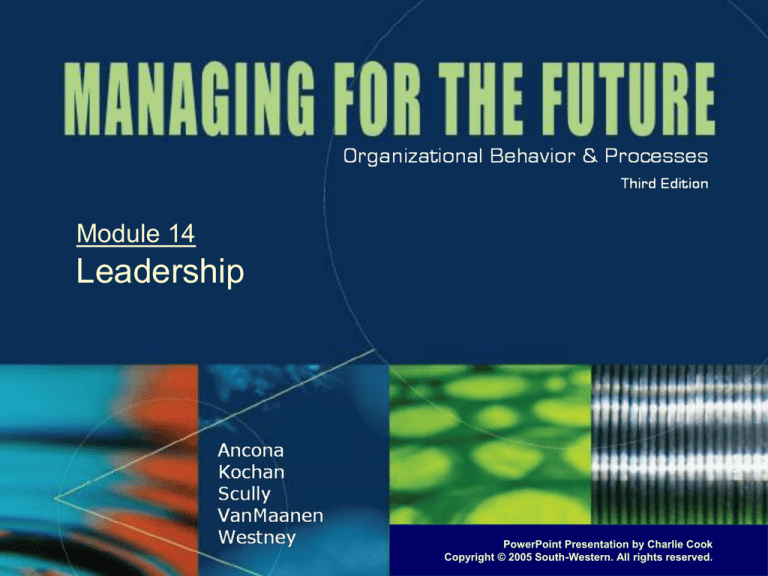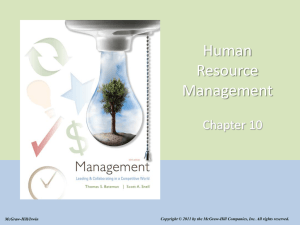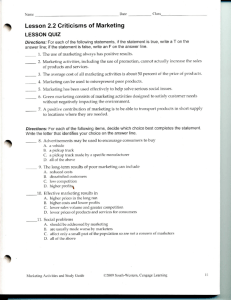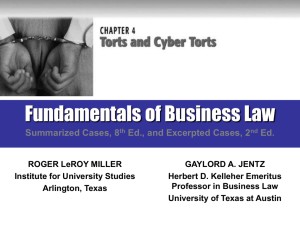
Module 14
Leadership
PowerPoint Presentation by Charlie Cook
Copyright © 2005 South-Western. All rights reserved.
Leadership in Organizations
• Core assumptions of leadership framework:
Leadership is distributed
Leadership is personal and developmental
Leadership is a process to create change
Leadership develops over time
Class Note: Leadership in an Age of Uncertainty
Copyright © 2005 South-Western. All rights reserved.
14–2
The Four Capabilities Framework
• Four key leadership capabilities are:
Sensemaking
Relating
Visioning
Inventing
Class Note: Leadership in an Age of Uncertainty
Copyright © 2005 South-Western. All rights reserved.
14–3
Leadership Framework
Class Note: Leadership in an Age of Uncertainty
Copyright © 2005 South-Western. All rights reserved.
Transparency 14.1
Figure 14.1
14–4
The Four Capabilities Framework (cont’d)
• Sensemaking defined
Making sense of the world around us
Coming to understand the context in which you are
operating
Creating a map that represents the current situation of
the group or organization
Class Note: Leadership in an Age of Uncertainty
Copyright © 2005 South-Western. All rights reserved.
14–5
The Four Capabilities Framework (cont’d)
• Tips for effective sensemaking:
Seek many types and sources of data
Involve others in your sensemaking
Avoid existing frameworks; let the appropriate map
emerge
Move beyond stereotypes; push for what’s behind the
labels
Learn from small experiments
Use images, metaphors, or stories to illustrate critical
elements of your map
Class Note: Leadership in an Age of Uncertainty
Copyright © 2005 South-Western. All rights reserved.
14–6
The Four Capabilities Framework (cont’d)
• Relating defined
Centers on the leader’s ability to engage in inquiry,
advocacy, and connecting
Inquiry—ability to listen and understand what others are
thinking and feeling
Advocacy—being clear about your own point of view and
trying to influence others of its merits
Connecting—cultivating a set of people who help each other to
accomplish their goals
Class Note: Leadership in an Age of Uncertainty
Copyright © 2005 South-Western. All rights reserved.
14–7
The Four Capabilities Framework (cont’d)
• Tips for effective relating:
Understand the perspective of others and withhold
judgment while listening to others
Encourage others to voice their opinions
Be clear about what your stand is and how you got
there
Think about how others might react to your idea and
how you can best explain it to them
Think about your connections—do you feel good about
the nature of your relationships?
Class Note: Leadership in an Age of Uncertainty
Copyright © 2005 South-Western. All rights reserved.
14–8
The Four Capabilities Framework (cont’d)
• Visioning defined
Creating a compelling vision around something that
the leader and others care about, linking it to key
values in the culture, and communicating it in a way
that motivates others
Visions provide people with a sense of meaning about
their work
Visions are most compelling when they come from a
sincere belief in the cause
Class Note: Leadership in an Age of Uncertainty
Copyright © 2005 South-Western. All rights reserved.
14–9
The Four Capabilities Framework (cont’d)
• Tips for effective visioning:
Develop a vision about something that excites you or
that you think is important
Frame the vision with an ideological goal
Use stories, metaphors, and analogies to paint a vivid
picture of what the vision will accomplish
Practice creating a vision in many arenas
Enable others by pointing out that their skills and
capabilities are needed to realize the vision
Embody the key values and ideas of the vision
Class Note: Leadership in an Age of Uncertainty
Copyright © 2005 South-Western. All rights reserved.
14–10
The Four Capabilities Framework (cont’d)
• Inventing defined
Changing the way that people work together to
improve what is going on, to realize the vision, or to
overcome obstacles
Can also be seen as a whole new way of approaching
a task
Goes hand-in-hand with sensemaking
Class Note: Leadership in an Age of Uncertainty
Copyright © 2005 South-Western. All rights reserved.
14–11
The Four Capabilities Framework (cont’d)
• Tips for effective inventing:
Focus on improving the ways that people work
together in your team and organization
When a new task or change effort emerges, think
through how it will get done
Play with new and different ways of organizing work
Blend sensemaking and inventing
Class Note: Leadership in an Age of Uncertainty
Copyright © 2005 South-Western. All rights reserved.
14–12
The Change Signature
• The unique leadership behavior of individuals
that is based on experience and acquired skills
and which serves to guide choices about:
Allocating time
Establishing priorities and goals
Commitment to fight for something
• The change signature is made up of a credo and
the characteristic way in which the leader creates
change
Class Note: Leadership in an Age of Uncertainty
Copyright © 2005 South-Western. All rights reserved.
14–13
Four Parts of the Self
Exercise: Your Change Signature
Copyright © 2005 South-Western. All rights reserved.
Figure 14.2
14–14
Four Parts of the Self (cont’d)
• Step 1: Past Self
What values did your family stress? Did you adopt
those values or fight against them?
Who were your heroes? What values did you take
from them?
How did you gain recognition and self esteem?
What skills did you begin to develop in your formative
years?
What values, skills, and patterns of leading are part of
your past self?
Exercise: Your Change Signature
Copyright © 2005 South-Western. All rights reserved.
14–15
Four Parts of the Self (cont’d)
• Step 2: Developed Self
What best describes the values and skills that you
have honed?
What have conflicts shown you about what is really
important to you?
Are you best known as an analytic person, a problem
solver, a visionary, or a people person?
What leadership challenges have you taken on?
What have you learned about yourself as a leader?
How would others describe your change signature?
Exercise: Your Change Signature
Copyright © 2005 South-Western. All rights reserved.
14–16
Four Parts of the Self (cont’d)
• Step 3: Underdeveloped Self
Are there any areas of yourself that you feel you want
to begin to develop?
What kind of plan can you put together to move
aspects of yourself from the underdeveloped to the
developed side of the diamond?
Exercise: Your Change Signature
Copyright © 2005 South-Western. All rights reserved.
14–17
Four Parts of the Self (cont’d)
• Step 4: Future Self
What aspects of others’ leadership would you like to
incorporate into your own?
If you think about the end of your career, what would
you want people to say about you?
If a head hunter called a colleague to ask about what
kind of leader you are, what do you wish they would
say?
If you think about the things you would like to do and
the kind of person you would like to be, what would
you need to do to be able to get there?
Exercise: Your Change Signature
Copyright © 2005 South-Western. All rights reserved.
14–18
Our Leadership Development
Model Elaborated
The Press: Excerpts from Geeks and Geezers
Copyright © 2005 South-Western. All rights reserved.
Figure 4.1
14–19






